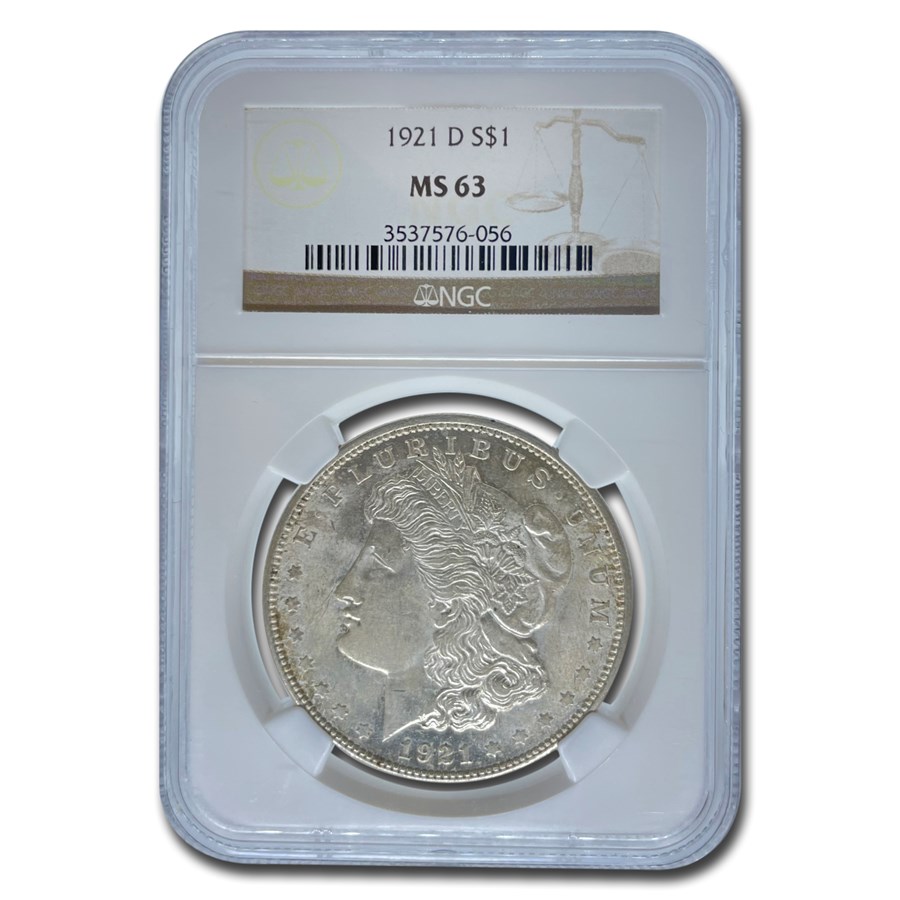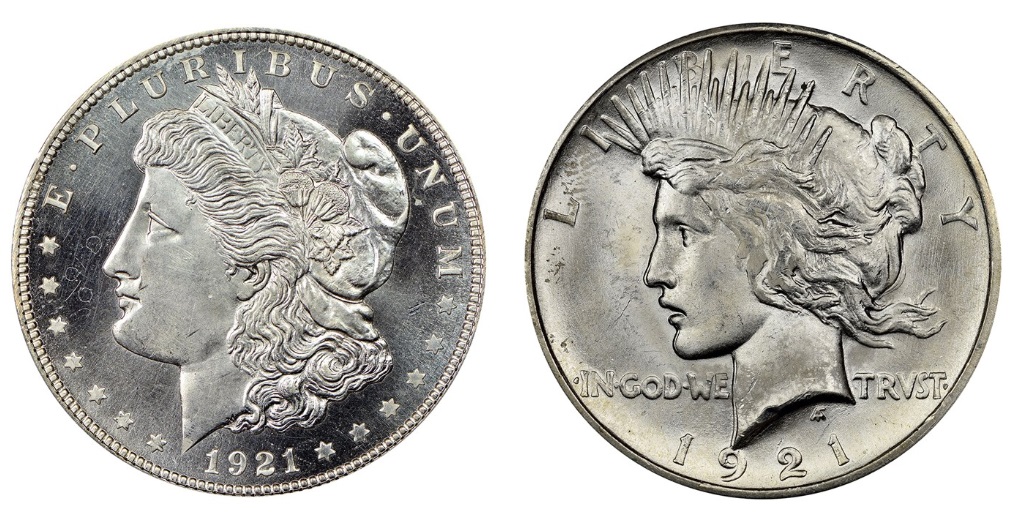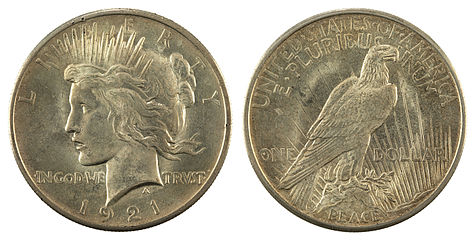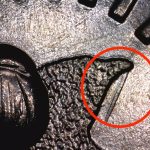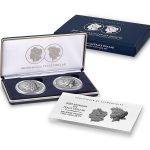In 1921, the United States ushered in the Peace Dollar to commemorate the end of the First World War with a symbol of hope for lasting peace following one of the most devastating conflicts in human history.
The Peace Dollar replaced the beloved Morgan Dollar, which had returned briefly in 1921. Congressman Albert Henry Vestal’s legislation authorized the new coin, and after a competitive design selection, Anthony de Francisci’s striking artistic vision was selected and approved by President Warren G. Harding.
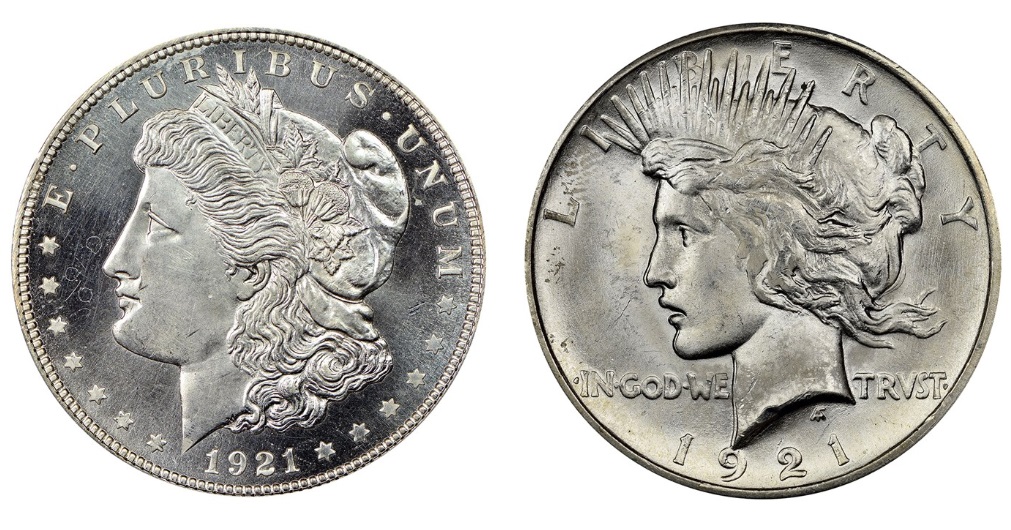
The inaugural 1921 Peace Dollar was minted exclusively in high relief, making it unique among subsequent issues and highly prized by collectors today. The story surrounding its creation includes some controversy over the symbolism that led to design revisions. Additionally, production challenges with the high-relief coin make pristine examples difficult to come by.
Key Highlights
- The 1921 Peace Dollar is a sought-after high-relief, first-year issue with just over one million coins minted.
- Anthony de Francisci’s symbolic design commemorated peace after World War I and became an iconic American silver coin.
- The coin had a controversial original reverse featuring a broken sword, which was quickly revised before public release.
- Due to its high relief, the 1921 Peace Dollar is widely collected as a unique, one-year type coin.
Why Is De Francisci’s Design Called the “Peace Dollar”?
Following World War I, numismatists, politicians, and the general public sought a tangible commemoration of the hard-won peace. Initially, the coin was envisioned as a half-dollar commemorative, but the United States Mint chose a larger, more impactful silver dollar instead.
The Mint opened a competitive design contest among America’s prominent sculptors, Anthony de Francisci, a 34-year-old Italian-American artist, secured the commission.
De Francisci’s design boldly highlighted “Peace” as its central theme. His initial design depicted a bald eagle breaking a sword—symbolizing disarmament—but public outcry against what some perceived as an image of defeat forced the Mint to remove the sword. Instead, an eagle perched proudly on a mountaintop grasping an olive branch became the final design, a powerful yet noncontroversial symbol of American strength and peaceful intent.
The 1921 Peace Dollar Is Popularly Collected as a Type Coin
The 1921 Peace Dollar’s distinctive high-relief strike distinguishes it from all subsequent issues (1922–1935).
This production issue limited the 1921 release to a relatively small mintage because Mint technicians faced severe challenges striking these coins. The high relief design required significantly more pressure to create, resulting in frequent die failures.
Just over one million coins were produced. Both NGC and PCGS each recognize 50 unique VAM varieties out of hundreds that have been discovered. The relatively small mintage, high-relief design and historical significance, ensures the coin remains in perpetual demand.
The 1921 Peace Dollar is considered an iconic coin due to its unique high-relief design and limited mintage. It stands out significantly in value and collectability when compared to the much more easily obtainable and common 1922 Peace Dollar.
How Much Is a 1921 Peace Dollar Worth?
Depending on grade or condition, the value of a 1921 Peace Dollar varies considerably. A circulated coin can typically range from $150 to $500. Uncirculated coins in average mint state (MS63) routinely command prices over $1,000.
Here’s a table showing approximate market values for the 1921 Peace Dollar across various grades:
| Condition (Grade) | Description | Estimated Market Value |
|---|---|---|
| Cull or Damaged | Heavily worn, damaged, cleaned | $75 – $120 |
| Good (G-4) | Worn surfaces, date and inscriptions clear | $125 – $175 |
| Very Good (VG-8) | Moderate wear, basic details visible | $150 – $225 |
| Fine (F-12) | Moderate wear, details clearer | $225 – $325 |
| Very Fine (VF-20) | Light wear, hair and feathers well-defined | $325 – $450 |
| Extremely Fine (EF-40) | Slight wear, most details sharp | $450 – $600 |
| About Uncirculated (AU-50) | Trace wear, significant original luster | $600 – $800 |
| Mint State (MS-60) | No wear, typical bag marks, uncirculated | $900 – $1,200 |
| Mint State (MS-63) | Uncirculated, good strike, nice eye appeal | $1,300 – $1,700 |
| Mint State (MS-65) | High-quality gem, attractive luster | $2,800 – $4,500 |
| Mint State (MS-66) | Exceptional quality, superb strike | $6,000 – $12,000+ |
| Mint State (MS-67 and above) | Finest known specimens, extremely rare | $40,000 – $264,000+ |
Note: These prices reflect current market conditions and may fluctuate based on demand, dealer inventory, auction records, and third-party grading certifications (e.g., PCGS or NGC). Always consult current auction and dealer prices for exact valuations.
Coins graded MS65 or above can reach tens of thousands of dollars, while extraordinary examples graded MS67 have fetched prices over $100,000.
Collectors and investors should seek coins certified by reputable third-party grading services such as NGC, PCGS, or CAC to ensure authenticity and accurate grading and maximize their investment.
Market Data and Noteworthy Specimens
The following recent auction sales demonstrate the robust collector market for high-grade 1921 Peace Dollars:
- PCGS MS67 – “The Anne Kate Collection,” Stack’s Bowers (August 2018), sold for $132,000.
- NGC MS67 – Stack’s Bowers (August 2024), sold for $43,200.
- NGC MS66+ CAC – Legend Rare Coin Auctions (April 2022), sold for $21,737.50.
- PCGS MS66 CAC – Heritage Auctions (February 2023), sold for $21,600.
- NGC MS66 – Heritage Auctions (July 2023), sold for $6,600.
These examples illustrate that pristine, high-grade 1921 Peace Dollars remain coveted by collectors and fetch substantial premiums in today’s market.
Design
Obverse
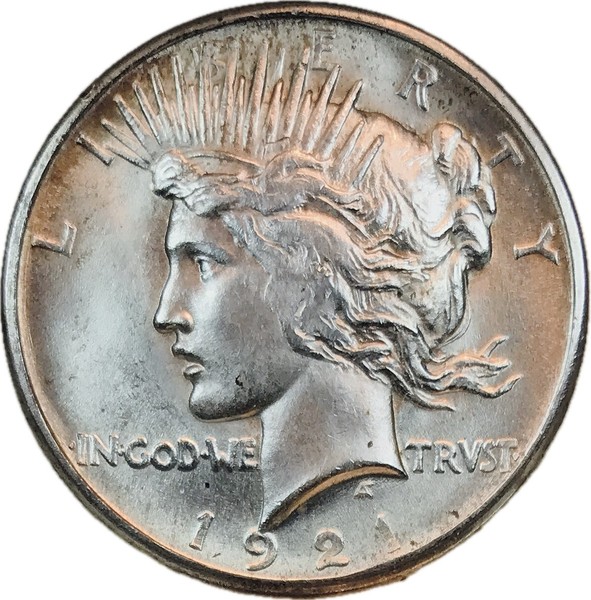
The obverse prominently displays a striking profile of Miss Liberty facing left, wearing a radiant tiara symbolizing freedom and enlightenment. Her hair is intricately styled in a bun, with loose strands gracefully hanging around her neck. Above Liberty’s head, “LIBERTY” arches boldly across the top rim, with the motto “IN GOD WE TRVST” artistically positioned behind and in front of her neck. The date “1921” sits centered beneath her portrait. De Francisci’s “AF” monogram is subtly inscribed beneath her neckline.
Reverse
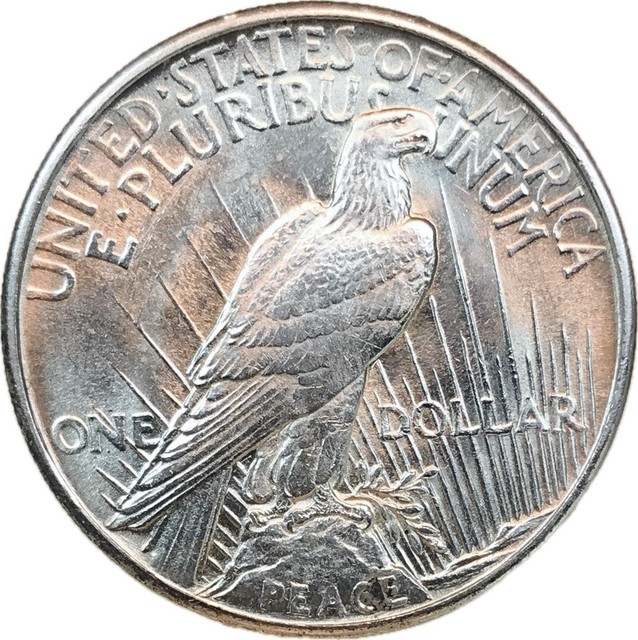
The reverse showcases a powerful and majestic eagle perched atop a mountaintop, holding an olive branch, symbolizing peace. Behind the eagle, the rising sun’s rays evoke a new era of hope. The inscriptions “UNITED STATES OF AMERICA” and “E PLURIBUS UNUM” frame the upper portion of the coin, while “ONE DOLLAR” appears prominently at the bottom. Above the rock on which the eagle perches, the word “PEACE” reinforces the coin’s commemorative message.
The 1921 Peace Dollar has a reeded edge, a standard feature that protects against wear and authenticity verification.
Designer
Anthony de Francisci (1887–1964) was an Italian-American sculptor who emigrated to the United States from Palermo, Sicily, in 1905. He apprenticed under acclaimed numismatic artists such as James Earle Fraser and Adolph Weinman, acquiring exceptional skill in bas-relief sculpture.
De Francisci’s crowning achievement was undoubtedly the Peace Dollar (1921–1935), which earned lasting recognition for its artistic merit and profound symbolism. Beyond coinage, his extensive work includes various commemorative medals and sculptures admired for their graceful elegance and enduring craftsmanship.
Coin Specifications
| Specification | Details |
|---|---|
| Country | United States of America |
| Year of Issue | 1921 |
| Denomination | One Dollar (USD) |
| Mintmark | None (Philadelphia Mint) |
| Mintage | 1,006,473 |
| Composition | 90% Silver, 10% Copper |
| Weight | 26.73 grams |
| Diameter | 38.1 mm |
| Edge | Reeded |
| Obverse Designer | Anthony de Francisci |
| Reverse Designer | Anthony de Francisci |
| Quality | Business Strike (High Relief) |
The 1921 Peace Dollar remains an iconic American cherished for its unique high-relief beauty, historical significance, and intrinsic silver value. Whether as a single-type specimen or part of a comprehensive collection, this coin holds aesthetic charm and financial promise, securing its enduring status among American numismatic treasures.
FindBullionPrices.com can help you compare online dealer prices for Peace Dollar silver coins:
